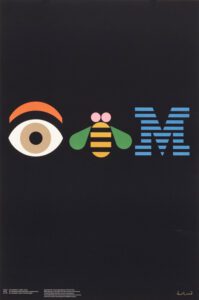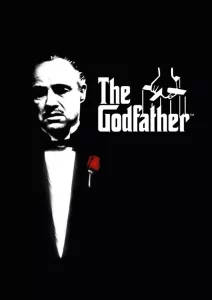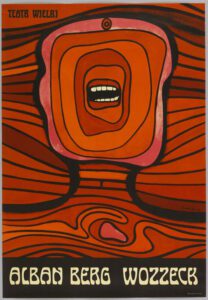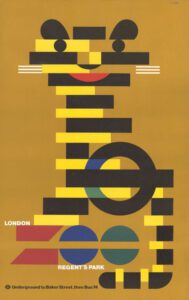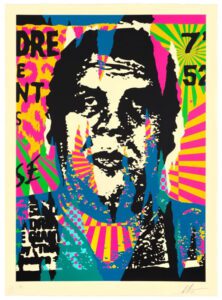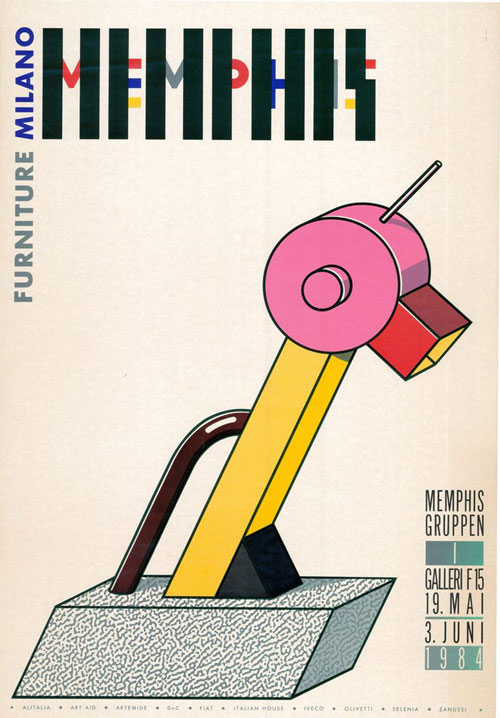
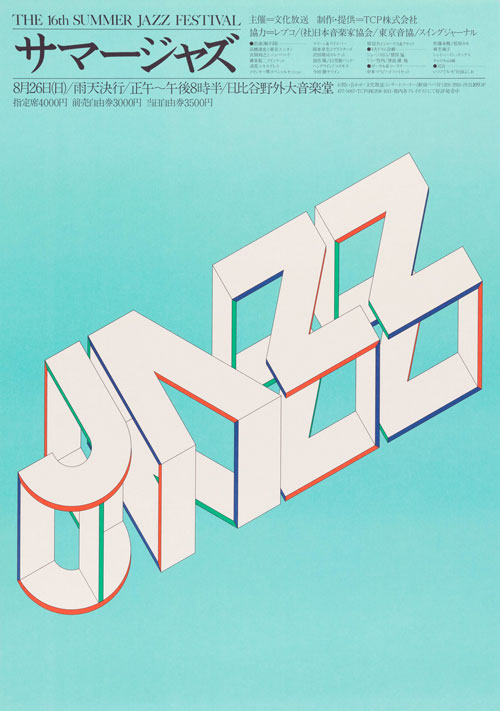
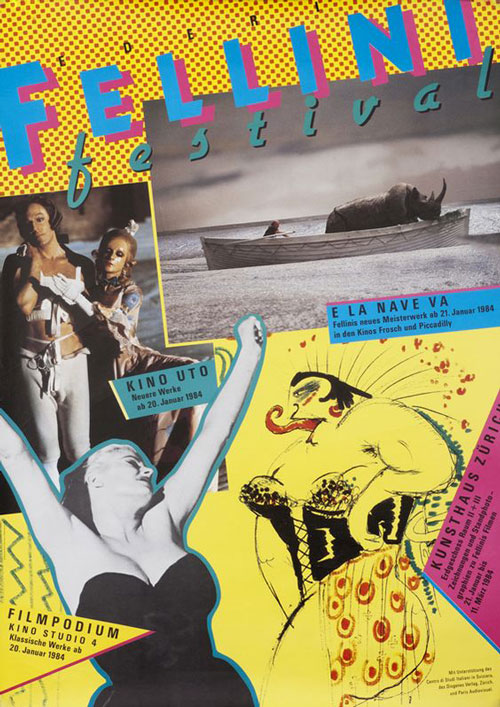
Designs without definition
Despite its prevalence in the recent history of poster art, the term ‘post-modern design’ has a rather loose definition.
The style emerged just as the influence of the ‘International Style’ began to peter out. While the International Style was considered formal, the ‘post-modern’ style allowed for free association, pastiche-esque designs, and complexity for the enjoyment of complexity.
As well as this, the post-modern design style of the 1980s didn’t have a distinctive nucleus or localised hub (in the way that the International Style felt grounded in Switzerland with the Swiss artists who perfected it).
As modern technology was evolving, and as the digital era was on the cusp of becoming omnipresent, artists were much more at home with drawing inspiration on an international level. As this article will show, graphic designers from both sides of the Atlantic Ocean were employing the post-modern style within their work, for a variety of different purposes and varying results.
So while there’s no set definition for ‘post-modern design’, this article will aim to note the similarities of 9 famous posters from the era:
Art Scene Zurich - Paul Bruhwiler 1981
Designed for an Art Festival in Zurich during the winter of 1981/82, Bruhwiler’s poster is a good example of the post-modernist style in action.
There’s a seemingly freewheeling use of colour in this poster, with reds, purples, and yellows bleeding into the typography.
In the centre of the poster, a person’s eyes stare out from what appears to be a TV – all of it rendered in black and white pointillist dots. Even here, cuts of random colour seem to peel through the pointillist design.
The poster is evocative, maximalist, and influenced by numerous designs – but without sticking to the strictures of one particular form.
In a modern, mass-media era, post-modernist designers clearly made a point of maxing out the imagery on their posters.
This might explain the odd beauty, chaos, and utility of Meichtry’s Fellini Festival poster. The pointillism, the cut outs, the squiggles, the colours, the mish-mash of iconic scenes cut from La Dolce Vida, E La Nave Va and Ocho Y Medio; all of it geared towards one purpose – demanding your attention.
And, it’s important to stress that under the umbrella of ‘post-modernism’, neither subtly nor unsubtly really mattered when it came to art. Everything was permissible – as long as it was new and emotive.

